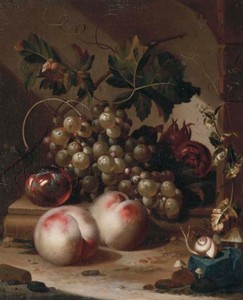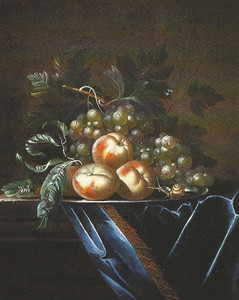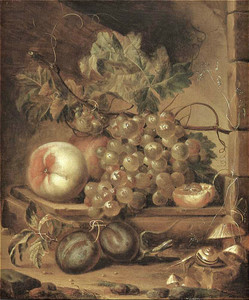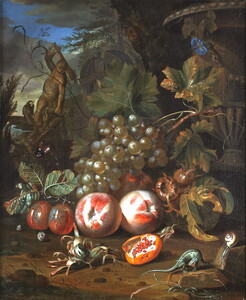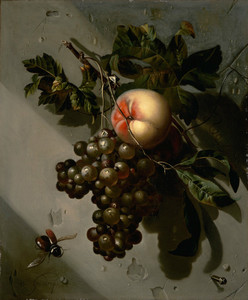5.000 €
A fruit still life with peaches and grapes, a butterfly and a fly
Oil on canvas : 54,7 X 44,3 cm
Unsigned
Frame : 68,7 X 60,1 cm
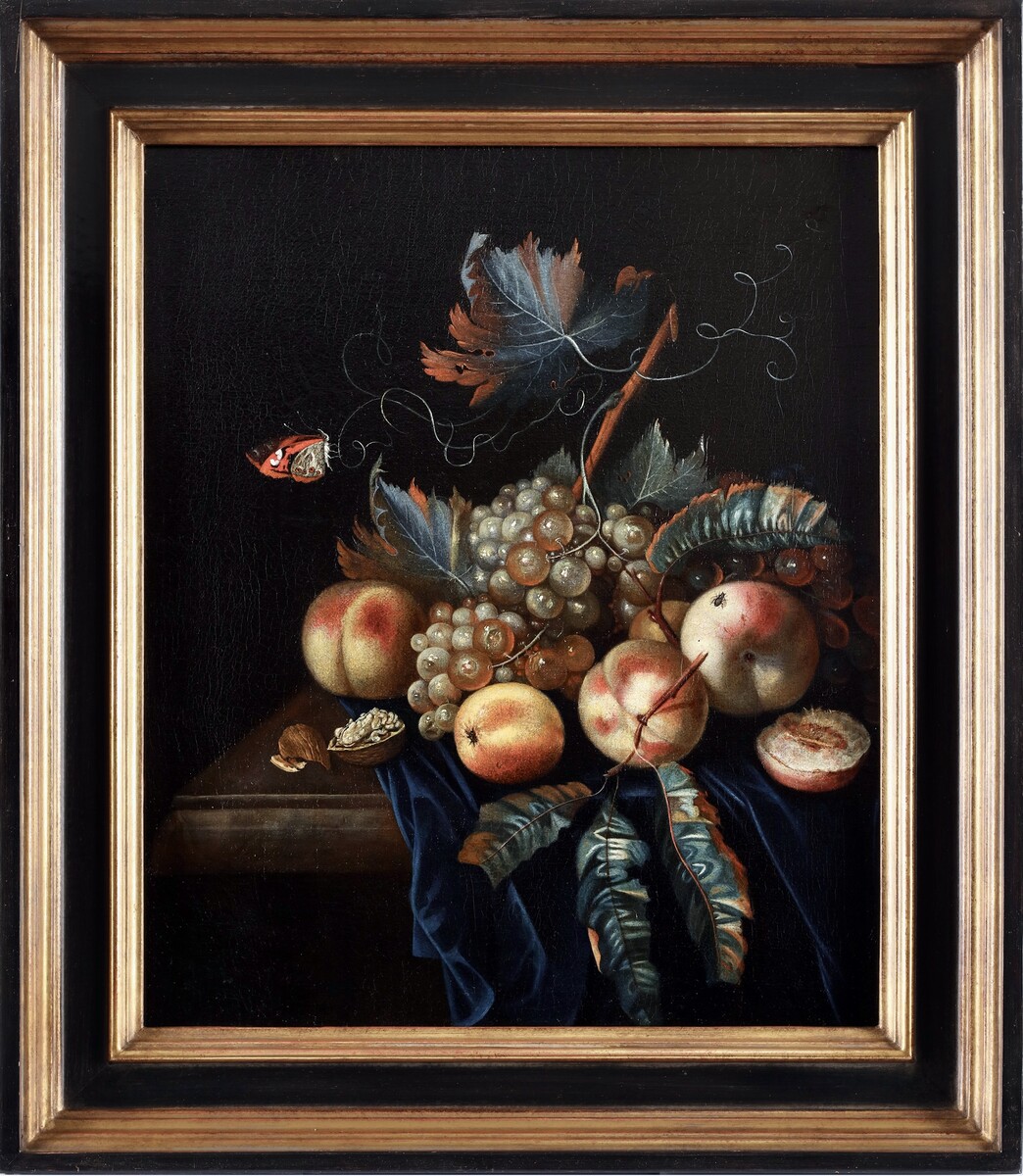
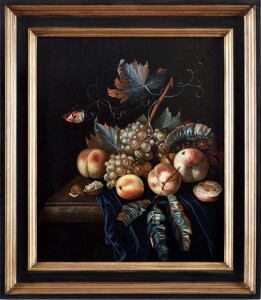
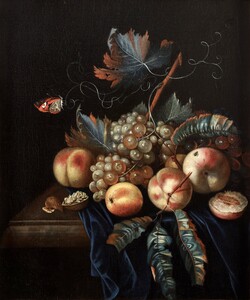
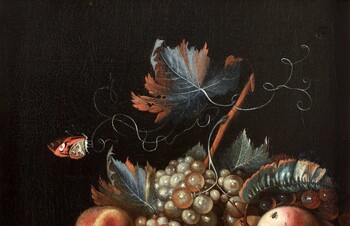
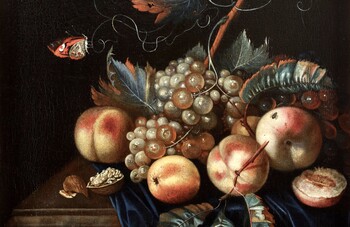
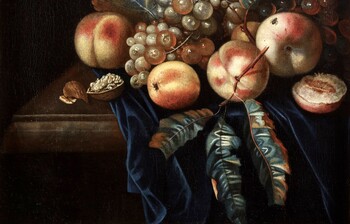
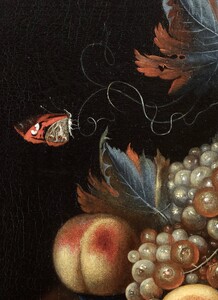
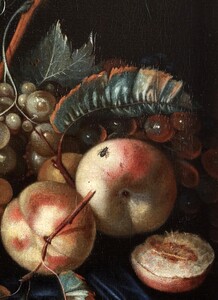
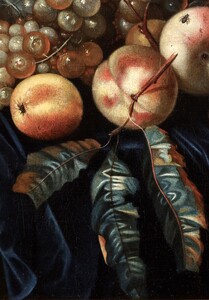
In short
Willem Grasdorp is a rare Late Baroque Dutch still life painter. Besides for his excellent paintings he has remained famous for Arnold Houbraken’s description of the way in which he was bullied at the age of 19 in Amsterdam by his Master, the still-life painter Ernst Stuven.
About Willem Grasdorp I
Dutch painter
Zwolle 1678 – 1723 Amsterdam
Excellent, but rare painter of flower and of fruit still lifes.
A Dutch draughtsman active at the middle of the 18th century had the same name as our painter and is therefore called Willem II.
Our Willem was the son of the landscape and town view painter Jan Grasdorp (Zwolle 1642 – 1686 Zwolle). Willem started studying painting under his father, who died in 1686 when Willem was only eight years old. It is not known with whom he continued his studies. In 1697 Willem was inscribed as a pupil of the important still life painter Ernst Stuven in Amsterdam. He was so severely mistreated by his master that he had to be released by the bailiff’s men.
Poor Grasdorp, who had not even studied for a complete year under Stuven, was stylistically strongly influenced by him. He became a good still life painter and remained apparently active in Amsterdam, where he died at the age of 44. He was buried in the Zuiderkerk.
The incredible story of Grasdorp’s stay with his master and bully Ernst Stuven
The biographer of Dutch contemporary painters, Arnold Houbraken describes in his ‘De groote schouburgh der Nederlantsche konstschilders en schilderessen’ from 1718 (P. 373 -378) extensively about the unhappy adventures of our Willem Grasdorp.
His master, the German still life painter Ernst Stuven was born in Hamburg circa 1657. In 1675, at the age of 18, he travelled to Amsterdam, where he studied under the Dutch painter Johannes Voorhout I (at that time he was mainly active as a portrait painter) whom he had met in Hamburg. Stuven rapidly switched to still life painting, studying first under Willem van Aelst, later under Abraham Mignon; in Hamburg Stuven’s very first master had been the still life painter Georg Hainz.
Aged 19, in 1697, Grasdorp had been sent by his mother to Amsterdam to study during three years painting under Ernst Stuven. Stuven, who was apparently a terribly aggressive man, severely mistreated Grasdorp and locked him up in his house. Finally Grasdorp was able to write a letter to his mother. Houbraken described in his juicy style how Stuven, by then completely mad, fought with our painter’s uncle and also with several police officers. He then prepared himself for a siege in a room at the first floor of his house: he had a sword, loaded guns and a heap of stones ready, which he could throw to the bailiff’s men. Stuven appeared screaming at the window with his face and hands painted in red, and told his imprisoned pupil Grasdorp to prepare for death. Stuven beat him up, he even pierced his lip with a pencil. Finally after a few days the policemen were able to break away the flooring of the room above Stuven and they caught him with a shipper’s hook attached to a rope, which went through his cheek. Stuven was sentenced to 12 years imprisonment.
Ernst Stuven was sent to the Rasphuis prison where prisoners had to rasp the wood from the brazilwood tree to powder. When oxidised that powder formed a red pigment that was used as a textile dye. After six years some of his clients saw to it that he was released, on the sole condition that he would leave Amsterdam. As he remained in Amsterdam, returned to his strange behaviour and insulted a magistrate, he was again imprisoned for some time. After he was released for the second time he lived for a short spell in Haarlem before moving to Rotterdam where he lived for a couple of years until his death in 1712.
Why should you buy this painting?
Because in this colourful and very decorative still life a lively depicted fly steals the show.

